#AI Based LMS
Explore tagged Tumblr posts
Text
youtube
AI-based LMS | Green LMS | Best LMS
GreenLMS is not just a learning platform but is a horizon where education transforms lives and learning transforms business. It’s a product born out of the passion of a mother a diligent father and a sensitive businessman. GreenLMS is a platform where digital innovation-image our future together through e-learning. Check here: https://www.thegreenlms.com/
#elearning#lms#lms for business#lms development#lms login#corporate lms#lms for university#learning management system#lms system#lms for colleges#AI Based LMS#AI#best lms#green lms#Youtube
0 notes
Text
There is no such thing as AI.
How to help the non technical and less online people in your life navigate the latest techbro grift.
I've seen other people say stuff to this effect but it's worth reiterating. Today in class, my professor was talking about a news article where a celebrity's likeness was used in an ai image without their permission. Then she mentioned a guest lecture about how AI is going to help finance professionals. Then I pointed out, those two things aren't really related.
The term AI is being used to obfuscate details about multiple semi-related technologies.
Traditionally in sci-fi, AI means artificial general intelligence like Data from star trek, or the terminator. This, I shouldn't need to say, doesn't exist. Techbros use the term AI to trick investors into funding their projects. It's largely a grift.
What is the term AI being used to obfuscate?
If you want to help the less online and less tech literate people in your life navigate the hype around AI, the best way to do it is to encourage them to change their language around AI topics.
By calling these technologies what they really are, and encouraging the people around us to know the real names, we can help lift the veil, kill the hype, and keep people safe from scams. Here are some starting points, which I am just pulling from Wikipedia. I'd highly encourage you to do your own research.
Machine learning (ML): is an umbrella term for solving problems for which development of algorithms by human programmers would be cost-prohibitive, and instead the problems are solved by helping machines "discover" their "own" algorithms, without needing to be explicitly told what to do by any human-developed algorithms. (This is the basis of most technologically people call AI)
Language model: (LM or LLM) is a probabilistic model of a natural language that can generate probabilities of a series of words, based on text corpora in one or multiple languages it was trained on. (This would be your ChatGPT.)
Generative adversarial network (GAN): is a class of machine learning framework and a prominent framework for approaching generative AI. In a GAN, two neural networks contest with each other in the form of a zero-sum game, where one agent's gain is another agent's loss. (This is the source of some AI images and deepfakes.)
Diffusion Models: Models that generate the probability distribution of a given dataset. In image generation, a neural network is trained to denoise images with added gaussian noise by learning to remove the noise. After the training is complete, it can then be used for image generation by starting with a random noise image and denoise that. (This is the more common technology behind AI images, including Dall-E and Stable Diffusion. I added this one to the post after as it was brought to my attention it is now more common than GANs.)
I know these terms are more technical, but they are also more accurate, and they can easily be explained in a way non-technical people can understand. The grifters are using language to give this technology its power, so we can use language to take it's power away and let people see it for what it really is.
12K notes
·
View notes
Text
28/3/25 AI Development
So i made a GAN image generation ai, a really simple one, but it did take me a lot of hours. I used this add-on for python (a programming language) called tensorflow, which is meant specifically for LMs (language models). The dataset I used is made up of 12 composite photos I made in 2023. I put my focus for this week into making sure the AI works, so I know my idea is viable, if it didnt work i would have to pivot to another idea, but its looking like it does thank god.
A GAN pretty much creates images similar to the training data, which works well with my concept because it ties into how AI tries to replicate art and culture. I called it Johnny2000. It doesnt actually matter how effective johnny is at creating realistic output, the message still works, the only thing i dont want is the output to be insanely realistic, which it shouldnt be, because i purposefully havent trained johnny to recognise and categorise things, i want him to try make something similar to the stuff i showed him and see what happens when he doesnt understand the 'rules' of the human world, so he outputs what a world based on a program would look like, that kind of thing.
I ran into heaps of errors, like everyone does with a coding project, and downloading tensorflow itself literally took me around 4 hours from how convoluted it was.
As of writing this paragraph, johnny is training in the background. I have two levels of output, one (the gray box) is what johnny gives me when i show him the dataset and tell him to create an image right away with no training, therefore he has no idea what to do and gives me a grey box with slight variations in colour. The second one (colourful) is after 10 rounds of training (called epoches), so pockets of colour are appearing, but still in a random noise like way. I'll make a short amendment to this post with the third image he's generating, which will be after 100 more rounds. Hopefully some sort of structure will form. I'm not sure how many epoches ill need to get the output i want, so while i continue the actual proposal i can have johnny working away in the background until i find a good level of training.


Edit, same day: johnny finished the 100 epoch version, its still very noisy as you can see, but the colours are starting to show, and the forms are very slowly coming through. looking at these 3 versions, im not expecting any decent input until 10000+ epochs. considering this 3rd version took over an hour to render, im gonna need to let it work overnight, ive been getting errors that the gpu isnt being used so i could try look at that, i think its because my version of tensorflow is too low. (newer ones arent supported on native windows, id need to use linux, which is possible on my computer but ive done all this work to get it to work here... so....)

how tf do i make it display smaller...
anyways, heres a peek at my dataset, so you can see that the colours are now being used (b/w + red and turquoise).

11 notes
·
View notes
Note
are you going to continue posting LM on tumblr after staff announced they have begun selling data to AI companies? if you are, please at the very least glaze and nightshade your work, it is fantastic and i would hate for it to end up in an algorithm's training data base
oh, don't worry! I took that option off in the settings ^^
49 notes
·
View notes
Text
Obsidian And RTX AI PCs For Advanced Large Language Model
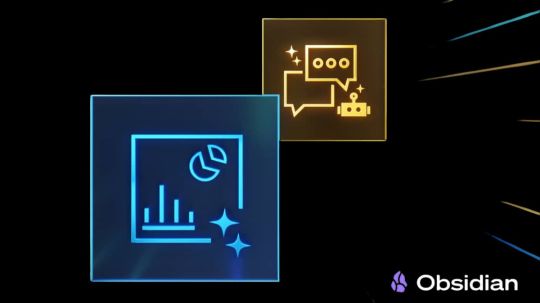
How to Utilize Obsidian‘s Generative AI Tools. Two plug-ins created by the community demonstrate how RTX AI PCs can support large language models for the next generation of app developers.
Obsidian Meaning
Obsidian is a note-taking and personal knowledge base program that works with Markdown files. Users may create internal linkages for notes using it, and they can see the relationships as a graph. It is intended to assist users in flexible, non-linearly structuring and organizing their ideas and information. Commercial licenses are available for purchase, however personal usage of the program is free.
Obsidian Features
Electron is the foundation of Obsidian. It is a cross-platform program that works on mobile operating systems like iOS and Android in addition to Windows, Linux, and macOS. The program does not have a web-based version. By installing plugins and themes, users may expand the functionality of Obsidian across all platforms by integrating it with other tools or adding new capabilities.
Obsidian distinguishes between community plugins, which are submitted by users and made available as open-source software via GitHub, and core plugins, which are made available and maintained by the Obsidian team. A calendar widget and a task board in the Kanban style are two examples of community plugins. The software comes with more than 200 community-made themes.
Every new note in Obsidian creates a new text document, and all of the documents are searchable inside the app. Obsidian works with a folder of text documents. Obsidian generates an interactive graph that illustrates the connections between notes and permits internal connectivity between notes. While Markdown is used to accomplish text formatting in Obsidian, Obsidian offers quick previewing of produced content.
Generative AI Tools In Obsidian
A group of AI aficionados is exploring with methods to incorporate the potent technology into standard productivity practices as generative AI develops and speeds up industry.
Community plug-in-supporting applications empower users to investigate the ways in which large language models (LLMs) might improve a range of activities. Users using RTX AI PCs may easily incorporate local LLMs by employing local inference servers that are powered by the NVIDIA RTX-accelerated llama.cpp software library.
It previously examined how consumers might maximize their online surfing experience by using Leo AI in the Brave web browser. Today, it examine Obsidian, a well-known writing and note-taking tool that uses the Markdown markup language and is helpful for managing intricate and connected records for many projects. Several of the community-developed plug-ins that add functionality to the app allow users to connect Obsidian to a local inferencing server, such as LM Studio or Ollama.
To connect Obsidian to LM Studio, just select the “Developer” button on the left panel, load any downloaded model, enable the CORS toggle, and click “Start.” This will enable LM Studio’s local server capabilities. Because the plug-ins will need this information to connect, make a note of the chat completion URL from the “Developer” log console (“http://localhost:1234/v1/chat/completions” by default).
Next, visit the “Settings” tab after launching Obsidian. After selecting “Community plug-ins,” choose “Browse.” Although there are a number of LLM-related community plug-ins, Text Generator and Smart Connections are two well-liked choices.
For creating notes and summaries on a study subject, for example, Text Generator is useful in an Obsidian vault.
Asking queries about the contents of an Obsidian vault, such the solution to a trivia question that was stored years ago, is made easier using Smart Connections.
Open the Text Generator settings, choose “Custom” under “Provider profile,” and then enter the whole URL in the “Endpoint” section. After turning on the plug-in, adjust the settings for Smart Connections. For the model platform, choose “Custom Local (OpenAI Format)” from the options panel on the right side of the screen. Next, as they appear in LM Studio, type the model name (for example, “gemma-2-27b-instruct”) and the URL into the corresponding fields.
The plug-ins will work when the fields are completed. If users are interested in what’s going on on the local server side, the LM Studio user interface will also display recorded activities.
Transforming Workflows With Obsidian AI Plug-Ins
Consider a scenario where a user want to organize a trip to the made-up city of Lunar City and come up with suggestions for things to do there. “What to Do in Lunar City” would be the title of the new note that the user would begin. A few more instructions must be included in the query submitted to the LLM in order to direct the results, since Lunar City is not an actual location. The model will create a list of things to do while traveling if you click the Text Generator plug-in button.
Obsidian will ask LM Studio to provide a response using the Text Generator plug-in, and LM Studio will then execute the Gemma 2 27B model. The model can rapidly provide a list of tasks if the user’s machine has RTX GPU acceleration.
Or let’s say that years later, the user’s buddy is visiting Lunar City and is looking for a place to dine. Although the user may not be able to recall the names of the restaurants they visited, they can review the notes in their vault Obsidian‘s word for a collection of notes to see whether they have any written notes.
A user may ask inquiries about their vault of notes and other material using the Smart Connections plug-in instead of going through all of the notes by hand. In order to help with the process, the plug-in retrieves pertinent information from the user’s notes and responds to the request using the same LM Studio server. The plug-in uses a method known as retrieval-augmented generation to do this.
Although these are entertaining examples, users may see the true advantages and enhancements in daily productivity after experimenting with these features for a while. Two examples of how community developers and AI fans are using AI to enhance their PC experiences are Obsidian plug-ins.
Thousands of open-source models are available for developers to include into their Windows programs using NVIDIA GeForce RTX technology.
Read more on Govindhtech.com
#Obsidian#RTXAIPCs#LLM#LargeLanguageModel#AI#GenerativeAI#NVIDIARTX#LMStudio#RTXGPU#News#Technews#Technology#Technologynews#Technologytrends#govindhtech
3 notes
·
View notes
Text
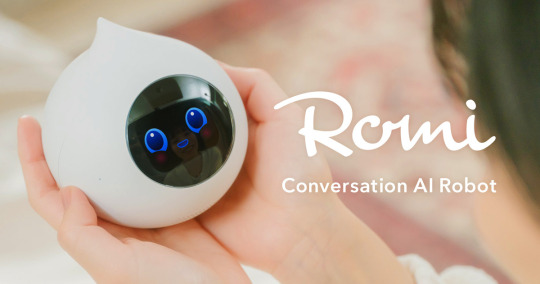




youtube
Romi conversation AI robot, Mixi, Japan (2021). "Romi is a specialized conversation robot that fits snugly in the palm of your hand. Differing from conventional robots equipped with fixed responses, Romi utilizes our cutting-edge proprietary communication AI to keep conversations going, meaning that you can speak to Romi just like a real human. We developed Romi to provide comfort like a pet and understanding like a family member. Possessing a rich range of emotional expression, Romi can share your happiness, sadness, and anger. Romi is sure to brighten your life with over 100 facial expressions and movement patterns and help you bring out the best of every day with over 100 functions such as alarms and reminders." – Providing space and opportunity for communication with Romi, Mixi.
"First, when a person speaks to Romi, Romi converts the voice data into string data via the Google Cloud Speech API. When this string data is sent to the conversation server, the server constructs the answer as text data and returns it to Romi. Finally, Romi uses text-to-speech to convert text into speech and respond to people. Romi uses generative AI in its conversation server to construct answers to people. However, the generative AI model used by Romi is "in a different direction of development'' from models such as GPT-4 … [where] hallucination becomes a major issue. On the other hand, Shinoda's managers tuned Romi based on the idea that even if there were some mistakes, 'as long as it's fun to talk about and the users laugh, that's fine.' This is one of the reasons why we used Stable LM as the base model for our original AI." – an interview with Harumi Shinoda, Vantage Studio Romi Division Development Group Manager, MIXI's conversation robot "Romi" that heals people, AI tuning that emphasizes fun over accuracy.
8 notes
·
View notes
Text
So I discovered a new toy called Notebook LM. It is this AI that is similar to ChatGPT but it only analyzes data that you feed it (PDFs, links, even YouTube videos). Then you can ask the AI questions about the material. But get this, that's not even the coolest part. It can even generate a podcast based on what you feed it. (for example the topic of Foster Care). It generates a life-like podcast with two hosts and they explore the topic you want.
You can use this as a way to study. It is capable of breaking down complex topics into bite sized pieces that laymen can understand. You can use this as a learning aid to help you understand topics like financial literacy, understanding your legal rights (employment, housing, personal), reading and understanding contracts and agreements.
I'm totally geeking out over this. I've wanted to make a foster care related podcast for a long time but there has definitely been barriers like finding a host/guest to speak to. Even though I know some former foster youth who expressed interest in podcasting, some of these topics can be pretty painful to revisit. There's also just the hustle and bustle of working full time and barely having any free time for side projects.
Anyways I think it's a really neat tool and people should check it out because it has a lot of utility.
5 notes
·
View notes
Text
Top Trends Shaping Classrooms Latest trends in educational technology for personalized learning
latest trends in educational technology for personalized learning is remodeling the panorama of getting to know, shaping how college students and educators engage with content material, and altering the very nature of the instructional enjoy. As we circulate in addition into the twenty first century, numerous tendencies are rising that promise to decorate academic results, customise getting to know, and put together students for a hastily evolving world. This article delves into the current developments in academic technology, examining their implications and potential effect on the future of training.
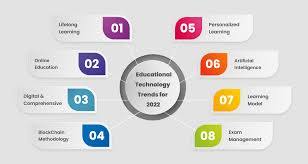
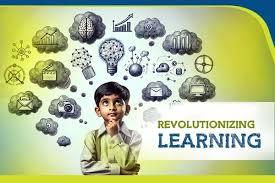
Artificial Intelligence (AI) and Machine Learning
Impact of artificial intelligence on classroom learning experiences and machine gaining knowledge of are revolutionizing schooling by way of enabling more customized and adaptive studying reports. AI-powered systems can analyze pupil performance records to tailor educational content to man or woman wishes. For example, AI can perceive a student’s strengths and weaknesses, supplying customized sporting events and resources to address particular gaps in expertise.
Key Applications
Adaptive Learning Systems
Platforms like DreamBox and Knewton adjust the problem and kind of content based on real-time evaluation of scholar interactions.
Automated Grading
AI can grade assignments and provide instantaneous comments, reducing the administrative burden on educators and letting them recognition greater on interactive coaching.
Virtual Reality (VR) and Augmented Reality (AR)
Virtual Reality (VR) and Augmented Reality (AR) are developing immersive gaining knowledge of environments that could decorate engagement and information. These technologies offer college students the opportunity to discover and engage with content in approaches that conventional strategies can not.
Key Applications
Virtual Field Trips
VR allows college students to go to historic websites, outer space, or maybe microscopic environments with out leaving the classroom. For instance, Google Expeditions gives virtual area trips to numerous global landmarks.
Interactive Simulations
: AR packages like JigSpace permit students to visualise complex ideas, such as the workings of the human frame or mechanical structures, via interactive 3-D fashions.
Gamification
Gamification incorporates recreation design elements into instructional settings to make gaining knowledge of extra enticing and motivating. By integrating factors, badges, leaderboards, and other recreation-like functions, educators can beautify scholar motivation and participation.
Educational Games
Platforms like Kahoot! And Quizizz use game mechanics to make quizzes and evaluation periods extra interactive and competitive.
Game-Based Learning Environments
Tools like Classcraft include function-gambling sport elements to encourage nice behavior and collaboration among students.
Learning Analytics
Learning analytics involves the collection and evaluation of data related to pupil getting to know methods and results. By leveraging data, educators can benefit insights into student overall performance and make knowledgeable selections to enhance teaching strategies and gaining knowledge of environments.
Performance Tracking
Learning management systems (LMS) like Canvas and Blackboard offer analytics dashboards that assist educators monitor student progress and identify trends.
Predictive Analytics
Tools such as Brightspace’s Insights use ancient statistics to expect student performance and perceive those at risk of falling at the back of.
Cloud-Based Learning Platforms
Cloud-primarily based mastering systems provide flexible and scalable answers for handing over educational content material and dealing with classroom sports. These systems facilitate collaboration, useful resource sharing, and get right of entry to to instructional materials from anywhere with a web connection.
Collaborative Tools
Google Classroom and Microsoft Teams for Education provide gear for document sharing, institution work, and communication amongst college students and teachers.
Resource Access: Platforms like Edmodo and Schoology enable college students to access route materials, submit assignments, and interact with friends and instructors on-line.
EdTech for Special Education
Technology is more and more getting used to support students with unique wishes, imparting gear and assets tailored to numerous mastering requirements. Assistive technologies and adaptive mastering equipment are assisting to create more inclusive academic environments.
Text-to-Speech and Speech-to-Text Tools
Tools like Kurzweil 3000 and Dragon NaturallySpeaking assist college students with analyzing and writing problems.
Customized Learning Environments:
Software like ModMath helps college students with dysgraphia by using providing a digital platform for fixing math troubles.
Blockchain for Education
Blockchain generation, recognised more often than not for its use in cryptocurrencies, is beginning to make an impact in education through its ability to securely and transparently manage instructional facts and credentials.
Digital Diplomas and Certificates
Platforms like Learning Machine and the MIT Media Lab are using blockchain to issue and verify virtual diplomas and certificates, lowering fraud and simplifying the credential verification method.
Decentralized Learning Records
: Blockchain can create steady, immutable statistics of scholar achievements and gaining knowledge of pathways, supplying a complete and verifiable educational history.
Personalized Learning
Personalized learning leverages technology to tailor academic stories to the specific needs and options of every student. This technique aims to enhance learning by using accommodating person getting to know styles, paces, and hobbies.
Customized Learning Paths
Platforms like Khan Academy and Coursera provide publications that adapt to the learner’s pace and provide recommendations based totally on progress and hobbies.
Learning Profiles
Tools inclusive of SMART Learning Suite allow teachers to create and track personalized getting to know profiles for every student, facilitating targeted coaching and comments.
Internet of Things (IoT) in Education
The Internet of Things (IoT) connects various devices and sensors to the net, enabling clever lecture rooms wherein bodily items can have interaction with digital structures. This technology has the ability to enhance each coaching and mastering stories.
Smart Classrooms
IoT gadgets like clever whiteboards and related sensors can music classroom situations, along with temperature and lights, and modify them to optimize gaining knowledge of environments.
Interactive Learning Tools
IoT-enabled devices, including linked robots and programmable sensors, offer hands-on learning reviews in subjects like robotics and science.
Mobile Learning
Mobile getting to know, or m-studying, utilizes cellular devices like smartphones and capsules to facilitate getting to know out of doors traditional classroom settings. This fashion helps anytime, everywhere access to educational assets.
Educational Apps
Apps such as Duolingo for language getting to know and Photomath for solving math troubles offer on-the-go gaining knowledge of possibilities.
Flexible Learning Resources
Mobile structures allow students to get right of entry to path materials, participate in discussions, and entire assignments from their devices.
#latest trends in educational technology for personalized learning#Impact of artificial intelligence on classroom learning experiences
2 notes
·
View notes
Text
Just so that people are also aware - these aren’t new issues. They have been known about for a significant number of years (5+) at this point. Longer if you count machine learning and software development in general. Google Deepmind created an artificial intelligence ethics unit board, (privately in existence since the mid 2010s, publicly since 2017) to understand multiple risks surrounding the use of AI technology. You would think this was a good thing. So what did they find? Timmit Gebru and Emily Bender, the leading Google ethics advisor and a computational linguistics professor respectively, helped co-author a paper called “On the Dangers of Stochastic Parrots: Can Language Models Be Too Big?“. Some of the key points include:
“In accepting large amounts of web text as ‘representative’ of ‘all’ of humanity we risk perpetuating dominant viewpoints, increasing power imbalances, and further reifying inequality.“
“In all cases, the voices of people most likely to hew to a hegemonic viewpoint are also more likely to be retained. In the case of US and UK English, this means that white supremacist and misogynistic, ageist, etc. views are overrepresented in the training data, not only exceeding their prevalence in the general population but also setting up models trained on these datasets to further amplify biases and harms.”
“BERT, ELMo, GPT and GPT-2 encode more bias against identities marginalized along more than one dimension than would be expected based on just the combination of the bias along each of the axes [ 54, 132]. Many of these works conclude that these issues are a reflection of training data characteristics.”
“...model auditing techniques typically rely on automated systems for measuring sentiment, toxicity, or novel metrics such as ‘regard’ to measure attitudes towards a specific demographic group [119]. But these systems themselves may not be reliable means of measuring the toxicity of text generated by LMs. For example, the Perspective API model has been found to associate higher levels of toxicity with sentences containing identity markers for marginalized groups or even specific names [61,103].“
It also talks about issues surrounding energy usage for large models and how environmentally friendly they are. Definitely take a read.
So what happened to Timmit? She was fired from her job. This was against a backdrop of mass protest within Google itself, with petitions and public calls for her work to be recognised by more than 1200 of her own colleagues.
If you’re interested in knowing more about AI hype - Timmit is still very active in AI ethics and runs the Distributed AI Research Institute (DAIR). They do a Twitch stream with researchers and guest speakers to highlight the tech industry’s bullshit every so often called the Mystery AI Hype Theater 3000 which I’d very much recommend: https://www.twitch.tv/dair_institute
The key takeaway here is that AI companies are aware of these problems - they simply aren’t interested in doing anything about them. Keep that in mind when using these tools.
This is why it is so important to be critical and double check everything you generate using image generators and text-based AI.
55K notes
·
View notes
Text
Top Microlearning Tools to Accelerate Your Business Growth | MaxLearn

In a rapidly evolving business environment, agility and adaptability are no longer optional—they are essential for sustained success. Companies that can quickly upskill their workforce gain a competitive edge, respond faster to change, and drive innovation. One of the most effective strategies for achieving this is through microlearning. Compact, focused learning experiences enable employees to acquire new knowledge or refine skills without stepping away from their daily responsibilities.
Organizations that embrace microlearning need the right tools to implement it effectively. From content creation to delivery and tracking, a robust ecosystem of tools is necessary to ensure a seamless and impactful learning experience. Let’s explore the top Microlearning Tools that can supercharge business growth.
1. Microlearning Platform
At the heart of every successful microlearning strategy lies a reliable Microlearning Platform. This is the foundation on which all microlearning initiatives are built. It allows for content hosting, delivery, and management, all within a centralized system. Platforms like MaxLearn offer intuitive interfaces and user-friendly experiences for both learners and administrators. They also integrate features like analytics, mobile compatibility, and adaptive learning to keep employees engaged and informed.
2. Microlearning Courses
Well-designed Microlearning Courses are the building blocks of effective training. These are bite-sized modules focused on specific skills or knowledge areas. Whether it's customer service techniques, software usage, or compliance policies, microlearning courses present information in a digestible, action-oriented format. Their brevity means employees can consume content in five minutes or less and immediately apply what they've learned.
3. Microlearning Applications
Mobility is key in modern workplaces. A dedicated Microlearning Application allows users to access training on the go—whether during a commute, between meetings, or while working remotely. These applications ensure that learning doesn’t stop at the office door. Employees can learn anytime, anywhere, turning idle moments into productive learning opportunities.
4. Microlearning Authoring Tools
For businesses looking to create customized content, Microlearning Authoring Tools are indispensable. These tools offer drag-and-drop editors, multimedia integration, and responsive design capabilities, allowing internal teams to build engaging and interactive microlearning modules without needing advanced technical skills. Quick course development also means faster adaptation to changes in business processes or regulations.
5. AI-powered Authoring Tool
An AI-powered Authoring Tool takes content creation to the next level. By harnessing artificial intelligence, these tools can suggest structures, create assessment questions, optimize readability, and even generate content templates. This not only speeds up the course development process but also improves consistency and learning effectiveness across modules.
6. Microlearning LMS
A Microlearning LMS (Learning Management System) is designed specifically to support the unique needs of microlearning. Unlike traditional LMS platforms, a microlearning LMS focuses on delivering short, targeted learning bursts with real-time tracking. It supports spaced repetition, gamification, and mobile-first learning—elements proven to enhance retention and learner engagement.
7. Microlearning Tools for Engagement and Feedback
Engagement is crucial for the success of any learning program. Tools like quizzes, flashcards, scenario-based learning, and instant feedback mechanisms enhance interactivity. These Microlearning Tools keep learners actively involved and provide immediate reinforcement, increasing the likelihood that new knowledge will stick.
8. Microlearning Software with Data and Analytics
Understanding learner behavior is vital to improving learning outcomes. Microlearning Software that includes detailed analytics and reporting capabilities enables organizations to track progress, measure performance, and identify knowledge gaps. These insights help tailor content strategies, improve course effectiveness, and ultimately contribute to better business results.
9. AI-Powered Learning Platform
An AI-Powered Learning Platform brings everything together—content creation, personalization, delivery, and analytics—under one intelligent system. It continuously learns from user interactions and adapts content delivery accordingly. This ensures that each learner receives training that is relevant to their needs and aligned with business goals, boosting both individual and organizational performance.
Conclusion
Microlearning has emerged as a powerful tool for driving employee development and accelerating business growth. But its success depends heavily on the tools you use to implement and manage it. From flexible platforms and mobile applications to smart authoring tools and AI-driven learning systems, choosing the right combination of Microlearning Platforms, tools, and software can transform the way your business trains and evolves.
MaxLearn provides a comprehensive suite of microlearning tools tailored to the needs of modern organizations. By adopting these tools, businesses can build a culture of continuous learning, increase efficiency, and stay ahead in today’s competitive landscape.
#Microlearning Platform#MicrolearningPlatform#Microlearning Courses#MicrolearningCourses#Microlearning Platforms#MicrolearningPlatforms#microlearning application#MicrolearningApplication#microlearningapplication#microlearning authoring tools#MicrolearningAuthoringTools#microlearningauthoringtools#microlearning tools#MicrolearningTools#microlearningtools#microlearning software#MicrolearningSoftware#microlearningsoftware#micro learning courses#MicrolearningLMS#microlearninglms#micro learning platform#AIPoweredAuthoringTool#AI Powered Authoring Tool#AIPoweredLearningPlatform#aipoweredlearningplatform#ai powered learning platform#microlearning lms#Microlearning Application#Microlearning Authoring Tools
0 notes
Text
What Makes a Good Membership Plugin in 2025? Key Features to Look For
In 2025, the digital membership economy continues to thrive, and choosing the right membership plugin can make or break the success of your online business. Whether you're launching an exclusive content platform, an eLearning website, or a subscription-based community, having a reliable and feature-rich membership plugin is crucial. Below, we explore the essential features, capabilities, and integrations that define the best membership plugins in 2025.
🚀 Future-Proof Integration Capabilities
A top-tier membership plugin in 2025 must offer seamless integrations with all major platforms and tools. From payment gateways like Stripe, PayPal, and Razorpay, to email marketing tools like Mailchimp, Klaviyo, and ActiveCampaign, integration is non-negotiable.
Key integrations to look for:
CRM tools: HubSpot, Zoho, Salesforce
LMS platforms: LearnDash, LifterLMS, Tutor LMS
eCommerce platforms: WooCommerce, Shopify, BigCommerce
Communication platforms: Slack, Discord, Zoom
If your plugin doesn’t support Zapier or Make (Integromat), it’s already behind the curve.
💳 Multiple Payment Options & Flexible Billing
Subscription flexibility is a core expectation in 2025. The ideal membership plugin must allow for:
Recurring payments (monthly, annually, quarterly)
One-time fees
Free trials and paid trials
Prorated billing
Upgrade/Downgrade plans without canceling
Support for global currencies, tax compliance (like EU VAT, GST), and invoice generation is critical. Plugins should also support Buy Now, Pay Later (BNPL) options such as Klarna or Afterpay to attract younger audiences.
🛡️ Enterprise-Grade Security & Content Protection
Members expect their data to be safe. Therefore, GDPR, CCPA, and PCI-DSS compliance are essential. Additionally, the plugin must offer:
Role-based access control
Encrypted login and two-factor authentication
IP restriction and geo-blocking
Anti-sharing protection (to prevent account misuse)
High-quality plugins use token-based authentication and email verification before granting access.
🧩 Advanced Content Dripping and Gating Mechanisms
Gone are the days of static content delivery. A modern membership plugin should offer:
Time-based content dripping (e.g., release Module 1 after 7 days)
Action-based unlocking (e.g., unlock next lesson after quiz completion)
Progressive onboarding sequences
Conditional content access based on member tags, behavior, or subscription tier
This leads to higher engagement, reduced churn, and better user satisfaction.
📊 Built-In Analytics & Reporting Dashboards
You can’t improve what you don’t measure. The best membership plugins in 2025 come equipped with real-time dashboards and advanced analytics.
Metrics you should track:
User retention rate
Churn rate
Revenue per member
Average subscription duration
Popular content/modules
Payment failure trends
Look for plugins that offer Google Analytics 4, Facebook Pixel, and custom event tracking compatibility out of the box.
📱 Mobile-First Member Experience
With mobile traffic exceeding 60% globally, your membership plugin must offer a responsive user experience. Bonus points if it supports:
Progressive Web Apps (PWA)
Customizable member dashboards
Mobile push notifications
In-app purchases for iOS and Android
Plugins that fail to deliver mobile accessibility are instantly disqualified from serious consideration.
🧠 AI-Powered Personalization and Automation
2025 plugins must be smart. AI-enhanced capabilities now power:
Dynamic content recommendations
Personalized upselling offers
Predictive churn prevention
Automated email journeys
The best membership plugins integrate with AI assistants and chatbots, helping automate FAQs, billing queries, and even community moderation.
📥 Easy Migration & Import Tools
Switching from one membership plugin to another shouldn’t be a nightmare. Look for:
CSV import/export
Auto-mapping for membership levels
Retention of subscription history
Migration guides or built-in migration wizards
Seamless onboarding is vital, especially for sites with thousands of active members.
👥 Tiered Membership & Group Subscriptions
A modern membership plugin must support:
Multiple pricing tiers with unique access levels
Team or group memberships (perfect for corporate clients)
Volume discounts
Add-on purchases
Support for parent-child account structures (e.g., one admin with multiple users under them) gives you a competitive edge.
🎨 Full Customization Without Code
Your brand matters. Top-tier plugins must offer:
White labeling options
Custom CSS/JS injection
Drag-and-drop member area builder
Custom email templates
The plugin should not lock you into rigid templates or force branding that isn’t yours.
🌐 Multilingual and Multisite Support
Global audiences demand multilingual support, and the best membership plugins now offer compatibility with:
WPML, Polylang, or TranslatePress
Multisite WordPress installations
RTL language support
Also, ensure it handles timezone localization and region-specific pricing with precision.
📞 World-Class Support and Documentation
Support is not an afterthought. Choose a plugin with:
24/7 live chat
Extensive documentation
Tutorial videos
Dedicated onboarding support
Developer-friendly API documentation
A strong plugin is only as good as the support behind it.
Final Thoughts
Choosing the right membership plugin in 2025 means investing in flexibility, security, AI-driven engagement, and global readiness. Whether you're running a coaching business, an eLearning academy, or an exclusive content platform, your membership plugin should empower growth without friction.
Focus on plugins that evolve fast, offer constant updates, and support the way you want to scale.
0 notes
Text
LM Enviornment, the group behind standard AI leaderboards, lands $100M
LM Enviornment, a crowdsourced benchmarking undertaking that main AI labs depend on to check and market their AI fashions, has raised $100 million in a seed funding spherical that values the group at $600 million, based on Bloomberg. Andreessen Horowitz (a16z) and UC Investments, which manages an funding portfolio for the College of California, led the fundraising. Lightspeed Enterprise…
0 notes
Text
1: a b c d e f g h i k l m n o p r s t u w y 21/36 (21/26) ⚢7/7⚢
2: aa ag ai al an as at ba bb be bi bl ch ci co di dy ea eb ed ee ei el en er es ey ff fi fl ge ha he ia ib ic id ie il in is it kn la lb le li ll lm ln ls me mu na ne ng ni no ns of os ou ow pe ra re sa sb sd se si sn sp ss st tc te th tu ur us yi yo 83/1296 (83/676) ⚢40/49⚢
3: aaa ail alb ale ali all als ana ang ani ans ase asi ass atu bal ban bas bbi bbl bea bee bia bib bis ble bli cha cia cos did dyi ean eba eel een eis eli ell ens era esb ffi fic fla ged han hey ial ian ibb ibi ibl ici ien ies ill iln ine ing ini isd ise ite kno lag lba lee les lie lil lin lit lli llm lme lna lsa mus nai nan nas nge nia nib nie nis now nsi off ost pel rat rei sal sas sbi sdy seb sen ses sib sil sin sna spe ssa ssi sss stc tco tel ter the tur ure use yin you 119/46656 (119/17576) ⚢76/343⚢
4: aaaa alba alee alie alsa anan ange ania anie aseb asil assa assi atur bale ball bani base basi bbib bble bean beel bian bibb bibl bise bles blin chan cial cost dyin eani eans ebal eeli eisd elin elli ellm ensi erat esbi ffic fici flag hang ibbi ibbl ibis ible icia illi ilna inis isdy ises iter know lban leen lesb lien lies liln line ling lini lite llie llin llme lnas muse nail nana nged nian nibb nies nsib offi ostc pell ratu reis sals sass sbia sdyi seba sens sibl sill snai spel ssas ssin ssss stco tell tera they ture urei ying 107/1679616 (107/456976) ⚢71/2401⚢
5: aaaaa alban aleen alien anana anged anian anies aseba assas assin ature balee bania baseb basil bbibb bbles beani beans beeli bibbi bible bises blini chang costc dying eanie eball eelin eisdy eline ellin ellme ensib eratu esbia ffici ficia hange ibble ibise icial illie ilnas isdyi itera lbani lesbi lilna linis liter llies lling nanan nibbl nsibl offic ostco pelli ratur reisd salsa sassi sbian sdyin sebal sensi sible silli snail spell ssass sssss tellm terat turei ureis 79/60466176 (79/11881376) ⚢52/16807⚢
6: aaaaaa albani asebal assass aturei baleen banian baseba bbibbi beanie beelin blinis change costco eanies eeline eisdyi elling ensibl eratur esbian fficia ficial hanged ibbles ibises illies isdyin iterat lbania lesbia lilnas litera nanana nibble nsible offici pellin rature reisdy sassin sdying seball sensib sillie spelli ssassi ssssss tellme teratu tureis ureisd 52/2176782336 (52/308915776) ⚢30/117649⚢
7: aaaaaaa albania aseball assassi atureis basebal beanies beeline changed eisdyin ensible erature fficial isdying iteratu lbanian lesbian literat nibbles officia pelling raturei reisdyi sensibl sillies spellin ssassin teratur tureisd ureisdy 30/78364164096 (30/8031810176) ⚢14/823543⚢
8: aaaaaaaa albanian assassin atureisd baseball eisdying eraturei iteratur literatu official ratureis reisdyin sensible spelling terature tureisdy ureisdyi 17/2821109907456 (17/208827064576) ⚢5/5764801⚢
9: aaaaaaaaa atureisdy eratureis iterature literatur ratureisd reisdying teraturei tureisdyi ureisdyin 10/101559956668416 (10/5429503678976) ⚢1/40353607⚢
10: aaaaaaaaaa atureisdyi eratureisd iteraturei literature ratureisdy teratureis tureisdyin ureisdying 9/3656158440062976 (9/141167095653376) ⚢1/282475249⚢
11: aaaaaaaaaaa atureisdyin eratureisdy iteratureis literaturei ratureisdyi teratureisd tureisdying 8/131621703842267136 (8/3670344486987776) ⚢1/1977326743⚢
12: aaaaaaaaaaaa atureisdying eratureisdyi iteratureisd literatureis ratureisdyin teratureisdy 7/4738381338321616896 (7/95428956661682176) ⚢1/13841287201⚢
13: aaaaaaaaaaaaa eratureisdyin iteratureisdy literatureisd ratureisdying teratureisdyi 6/170581728179578208256 (6/2481152873203736576) ⚢1/96889010407⚢
14: aaaaaaaaaaaaaa eratureisdying iteratureisdyi literatureisdy teratureisdyin 5/6140942214464815497216 (5/64509974703297150976) ⚢1/678223072849⚢
15: aaaaaaaaaaaaaaa iteratureisdyin literatureisdyi teratureisdying 4/221073919720733357899776 (4/1677259342285725925376) ⚢1/4747561509943⚢
16: aaaaaaaaaaaaaaaa iteratureisdying literatureisdyin 3/7958661109946400884391936 (3/43608742899428874059776) ⚢1/33232930569601⚢
17: aaaaaaaaaaaaaaaaa literatureisdying 2/286511799958070431838109696 (2/1133827315385150725554176) ⚢1/232630513987207⚢
18: aaaaaaaaaaaaaaaaaa 1/10314424798490535546171949056 (1/29479510200013918864408576) ⚢1/1628413597910449⚢
...
90: aaaaaaaaaaaaaaaaaaaaaaaaaaaaaaaaaaaaaaaaaaaaaaaaaaaaaaaaaaaaaaaaaaaaaaaaaaaaaaaaaaaaaaaaaa 1/116741446195279078628053382791335881633270131715832481723779676398836856930282974584939114053628368372944886748404030500135265750611474251776 (1/22263903829969996912976647181757169390323557208501249825339683936386553656853271234102179783588778043841325996746915453260005376) ⚢1/11450477594321044359340126713545146077054004823284978858214566372120240027249⚢
lesbian 2-grams missed in this post: ab, ae, bn, bs, ii, nb, nl, nn, sl
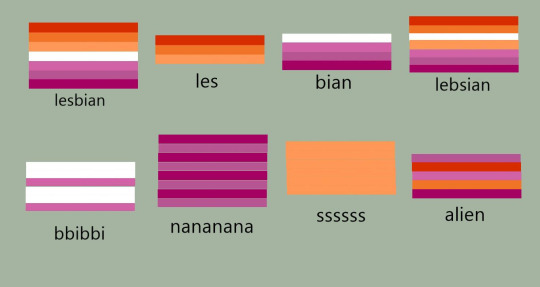
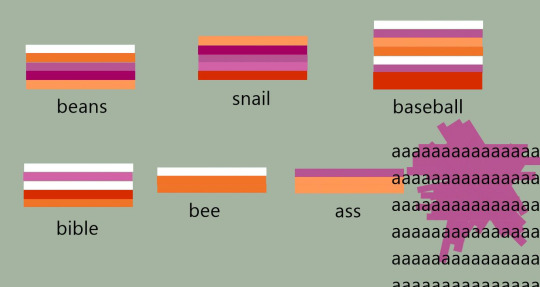
234K notes
·
View notes
Text
Hotel And Hospitality Management Software Market: Size, Share, Analysis, Forecast, and Growth Trends to 2032
The Hotel And Hospitality Management Software Market was valued at USD 3.63 billion in 2023 and is expected to reach USD 6.88 billion by 2032, growing at a CAGR of 7.40% from 2024-2032.
Hotel and Hospitality Management Software Market is witnessing rapid transformation as hotels, resorts, and travel-based businesses adopt digital systems to streamline operations and enhance guest experiences. The global rise in tourism and the need for seamless front-desk, booking, housekeeping, and back-office management is fueling demand across the USA and Europe.
Rising Demand for Efficient Operations Drives U.S. Hotel and Hospitality Management Software Market
U.S. Hotel And Hospitality Management Software Market was valued at USD 0.94 billion in 2023 and is expected to reach USD 1.78 billion by 2032, growing at a CAGR of 7.28% from 2024-2032.
Hotel and Hospitality Management Software Market is being reshaped by cloud technology, AI integration, and mobile-friendly interfaces. As properties strive for competitive differentiation and operational excellence, software vendors are responding with end-to-end platforms that manage everything from reservations to revenue analytics in real-time.
Get Sample Copy of This Report: https://www.snsinsider.com/sample-request/6525
Market Keyplayers:
Agilysys NV LLC (InfoGenesis POS, Agilysys LMS)
Cloudbeds (Property Management System, Booking Engine)
Hotelogix India Pvt. Ltd (Cloud PMS, Mobile Hotel App)
Maestro PMS (Property Management System, Online Booking Engine)
Mews Systems (Property Management System, Booking Engine)
Microsoft (Dynamics 365 Hospitality Accelerator, Azure for Hospitality)
Oracle (OPERA Cloud PMS, Hospitality Integration Platform)
RoomRaccoon (Property Management System, Booking Engine)
SAP SE (Customer Checkout, S/4HANA for Hospitality)
StayNTouch (Cloud PMS, Guest Mobility)
Amadeus IT Group (Central Reservation System, Property Management System)
Sabre Corporation (SynXis CRS, SynXis Property Manager)
InnQuest Software (roomMaster, Web Bookings)
Protel hotel-software GmbH. (Protel Air, Protel On-Premise)
RMS Cloud (Property Management System, Internet Booking Engine)
Cenium AS (Hospitality ERP, Property Management System)
eZee Technosys (FrontDesk, Reservation)
RoomKeyPMS (Property Management System, Booking Engine)
WebRezPro (Cloud PMS, Booking Engine)
Schneider Electric (EcoStruxure Building Operation, Guest Room Expert)
Siemens AG (Desigo CC, Hotel Solutions)
Market Analysis
The hotel industry is increasingly turning to software to automate complex processes and improve efficiency. From boutique hotels to global chains, technology is now central to managing bookings, guest interactions, inventory, payments, and compliance. In the USA, tech adoption is driven by demand for smart property management, while European markets emphasize data privacy and sustainability through software solutions. Vendors offering scalable, modular platforms are best positioned to meet the evolving needs of both regions.
Market Trends
Cloud-based PMS (Property Management Systems) gaining dominance
Mobile check-in/check-out becoming standard in guest services
Integration with third-party travel platforms and OTAs
AI-driven pricing and revenue optimization tools
Contactless payment and digital room access features
Sustainability tracking and smart energy monitoring systems
Real-time analytics dashboards for performance management
Market Scope
The scope of the Hotel and Hospitality Management Software Market is expanding as properties shift from legacy systems to agile, cloud-enabled solutions that offer greater control and insight.
Unified platforms managing all operational functions
Seamless integration with CRM, POS, and IoT devices
Customizable guest experience modules
Multi-property and multi-currency support
Compliance tools aligned with GDPR and other regulations
Scalable solutions for independent hotels to large chains
Forecast Outlook
The market is poised for continued innovation and adoption as hospitality providers respond to rising customer expectations and operational complexity. Enhanced guest personalization, predictive maintenance, and automated service delivery are becoming standard features. North America and Europe will remain at the forefront of demand, driving software vendors to innovate with user-centric design, localized compliance, and AI-powered business intelligence.
Access Complete Report: https://www.snsinsider.com/reports/hotel-and-hospitality-management-software-market-6525
Conclusion
In an industry where experience defines success, hotel and hospitality management software is becoming the backbone of operational excellence. From digital-first hotel chains in New York to eco-conscious resorts in Switzerland, the future is smart, seamless, and software-driven.
About Us:
SNS Insider is one of the leading market research and consulting agencies that dominates the market research industry globally. Our company's aim is to give clients the knowledge they require in order to function in changing circumstances. In order to give you current, accurate market data, consumer insights, and opinions so that you can make decisions with confidence, we employ a variety of techniques, including surveys, video talks, and focus groups around the world.
Contact Us:
Jagney Dave - Vice President of Client Engagement
Phone: +1-315 636 4242 (US) | +44- 20 3290 5010 (UK)
#Hotel And Hospitality Management Software Market#Hotel And Hospitality Management Software Market Scope#Hotel And Hospitality Management Software Market Share
0 notes
Text
How an RFID Library Management System Solves Book Tracking Challenges
Libraries have always been learning spaces and community gatherers. With continued growth into the digital age, libraries need better ways of working. Among the biggest changes is utilizing RFID (Radio Frequency Identification) technology, which is transforming libraries' book management.
What is RFID in Library Management
RFID (Radio Frequency Identification) identifies and tracks objects using radio waves, such as books at a Library. An RFID Library Management System consists of three primary components:
1. RFID tags at each book
2. RFID readers at the entrance, kiosk, or shelf
3. Library software that ties everything together and processes the data
This system enables librarians to locate, monitor, and organize books much more rapidly and precisely than with barcodes.

Why is Book Tracking Important?
Contemporary libraries face numerous challenges, including the issue of large collections and loss of books. Tracking of books is necessary for:
Keeping accurate counts
Preventing book loss or theft
Efficient management of shelves
Easy lending and returning of books
Implementation of RFID facilitates these activities faster and more accurately, freeing up staff time and enhancing users' experience.
Top Features of RFID in Book Tracking
1. Real-Time Inventory Management
RFID enables libraries to inventory instantly. RFID is different from barcodes because it can read multiple tags simultaneously, even if they are in a stack or closed, which saves time and keeps information up to date.
2. Faster Check-Out and Check-In
RFID self-service kiosks let users check out or return many books quickly, which cuts down waiting times and helps staff work better, especially during busy times like the start of a semester.
3. Improved Tracking of Book Locations
With RFID tags on shelves and mobile readers, employees can locate individual books on the shelves within the library and quickly retrieve or return them. A benefit of major libraries.
4. Enhanced Security
RFID exit gates can signal staff if an attempt is made to remove a book without checking it out. RFID is more capable than barcodes of alerting without having a line-of-sight to the reader, reducing loss of books without losing speed.
5.Less Error
The use of barcodes may result in errors when processing books. RFID facilitates automated data collection, which results in more accurate records for lending and inventory.
Real-World Examples
RFID has been implemented by many libraries across the globe. The Singapore National Library Board was among the pioneers to implement it, enhancing operations and reducing costs. Libraries in Europe and North America have also experienced improved availability of resources and contented customers following the implementation of RFID.
The Future of RFID in Libraries
With the evolution of RFID technology, it will get combined with IoT (Internet of Things), AI, and data analytics to offer smarter insights. Libraries will be able to use RFID information in the near future to understand how books are being used, improve shelf organization, and offer users recommendations based on their interests. RFID will become more than a tracking tool; it will help libraries prepare for the future.
Poxo RFID Library Management Solution streamlines library operations, increases efficiency, and improves the reader experience.
Conclusion
In an era where being efficient and making customers a priority is critical, employing RFID LMS for book tracking is an intelligent move for modern libraries. RFID makes libraries more efficient, helps them track their resources better, and enhances the experience of guests so that they can do more with less and serve their community even better.
0 notes
Text
𝗙𝗗𝗣 𝘀𝗲𝘀𝘀𝗶𝗼𝗻 𝗳𝗼𝗿 𝘁𝗲𝗮𝗰𝗵𝗲𝗿𝘀 𝗶𝗻 𝘀𝗰𝗵𝗼𝗼𝗹𝘀
A Faculty Development Program (FDP) for teachers in schools is a structured training initiative designed to enhance the professional skills, knowledge, and pedagogical approaches of educators. In India, FDPs are increasingly recognized as crucial for improving the quality of education and ensuring that teachers are equipped to meet the evolving demands of the 21st-century classroom, particularly in light of the National Education Policy (NEP) 2020 which emphasizes continuous professional development.
🔘Information about FDP sessions for teachers in schools in India:
▪️Objectives of FDPs for Teachers
FDPs aim to achieve several key objectives:
1.Enhance Teaching Effectiveness: Update teachers with the latest pedagogical strategies, classroom management techniques, and student engagement methods.
2.Strengthen Subject Knowledge: Provide in-depth knowledge and insights into specific subjects, including new concepts and recent developments.
3.Integrate Technology in Teaching: Train teachers on using educational technology, digital tools (like AI-powered tools such as ChatGPT, Gamma AI, Quill Bot), learning management systems, and online platforms for effective teaching and learning.
4.Promote Outcome-Based Education (OBE): Familiarize teachers with the OBE framework, emphasizing its role in curriculum design, assessment, and evaluation.
5.Develop Research Skills: Encourage teachers to engage in research, explore new trends, and contribute to knowledge creation in their respective fields.
6.Foster Holistic Development: Address aspects like communication skills, interpersonal skills, problem-solving, critical thinking, creativity, and motivation.
7.Cultivate Leadership Skills: Provide training in areas like conflict resolution, team management, decision-making, and strategic planning.
8.Improve Assessment and Evaluation: Equip teachers with advanced assessment tools, rubrics, and feedback mechanisms.
9.Address Teacher Well-being: Include sessions on stress management, time prioritization, setting boundaries, and self-care practices to promote work-life balance.
10.Facilitate Collaborative Learning: Create opportunities for teachers to interact, share best practices, and learn from their peers.
11.Align with NEP 2020: Ensure that teachers are aware of and can implement the guidelines and vision of the National Education Policy, which advocates for continuous professional development and a credit-based system for teacher development.
🔘Key Areas Covered in FDP Sessions
FDP sessions for school teachers often cover a wide range of topics, including but not limited to:
1.Pedagogical Innovations:
• Active learning strategies
• Differentiated instruction
• Inquiry-based learning
• Project-based learning
• Collaborative learning techniques
• Experiential learning
• Bloom's Taxonomy and its application
2.Educational Technology and Digital Tools:
• Using AI tools for lesson planning, content creation, assessment, and feedback automation (e.g., ChatGPT, Gamma AI, Quill Bot, Overleaf)
• Effective use of Learning Management Systems (LMS)
• Creating engaging digital content
• Online teaching strategies and blended learning approaches
• Data visualization and analysis with AI tools
3.Curriculum Design and Assessment:
• Outcome-Based Education (OBE) framework and implementation
• Curriculum alignment and strategic planning
• Formative and summative assessment techniques
• Designing effective rubrics
• Providing constructive feedback
4.Classroom Management and Student Engagement:
• Strategies for maintaining a positive and productive learning environment
• Techniques for student motivation and engagement
• Addressing diverse learning needs and inclusive education
5.Professional Growth and Well-being:
• Leadership skills for teachers
• Communication and interpersonal skills
• Stress management and mental health for educators
• Work-life balance
• Ethical considerations in teaching
6.Subject-Specific Enhancement:
• Updates on recent advancements in specific subjects (e.g., science, mathematics, languages, social sciences)
• New approaches to teaching particular subjects
7.Research and Development:
• Introduction to educational research methodologies
• How to conduct classroom-based research
• Utilizing research findings to improve teaching practices
🔘Duration and Mode of FDPs
FDPs can vary in duration, from a single day to several weeks. They can be conducted in various modes:
• Offline/In-person: Traditional workshops, seminars, and conferences.
• Online: Webinars, self-paced courses, and live virtual sessions. These have gained significant traction, especially after the pandemic, offering flexibility and wider reach.
• Hybrid: A combination of online and offline sessions.
🔘Organizing an FDP for Teachers in a School
Organizing a successful FDP requires careful planning and execution:
1.Identify Needs: Conduct a needs assessment among teachers to understand their specific professional development requirements, challenges, and areas of interest. This can be done through surveys, discussions, or performance reviews.
2.Define Objectives: Clearly articulate the learning objectives of the FDP. What specific skills or knowledge do you want teachers to acquire?
3.Design Curriculum/Content: Develop a detailed curriculum that addresses the identified needs and objectives. This involves selecting relevant topics, designing interactive activities, and incorporating practical assignments.
4.Select Resource Persons/Experts: Choose experienced and knowledgeable trainers, subject matter experts, or fellow faculty members who can deliver engaging and insightful sessions.
5.Choose Format and Duration: Decide on the appropriate format (online, offline, hybrid) and duration based on the content, availability of teachers, and resources.
6.Logistics and Technology:
• Offline: Arrange for suitable venue, teaching aids, materials, refreshments, and any necessary technical equipment.
• Online: Ensure a stable internet connection, suitable video conferencing platforms, and technical support for participants. Provide session links and joining details in advance.
7.Promote and Enroll: Announce the FDP to teachers, highlighting its benefits and how it aligns with their professional growth. Facilitate the registration process.
8.Execute the Program: Conduct the sessions as planned, ensuring interactive modules, practical activities, and opportunities for discussion and Q&A.
9.Gather Feedback: Collect feedback from participants at the end of each session or at the conclusion of the FDP. This feedback is crucial for evaluating the program's effectiveness and making improvements for future FDPs.
10.Evaluation and Follow-up: Assess the impact of the FDP on teachers' practice and student outcomes. Consider follow-up sessions, mentoring programs, or communities of practice to sustain learning and encourage ongoing application of new skills.
11.Certification: Provide certificates of participation to attendees, which can be valuable for their professional portfolios.
🔘Key Organizations and Initiatives in India
Several organizations and government initiatives in India focus on teacher professional development, including FDPs:
• National Council for Teacher Education (NCTE): Provides guidelines and resources for teacher education and professional standards.
• Ministry of Education, Government of India (through initiatives like SWAYAM and DIKSHA): Offers online courses and digital platforms for continuous learning. DIKSHA, for instance, is a national digital infrastructure for teacher education that can store, share, and verify digital documents, acting as a one-stop destination for teacher development.
• National Institute of Open Schooling (NIOS): Offers programs like the Diploma in Elementary Education (D.El.Ed) for in-service untrained teachers.
• AICTE (All India Council for Technical Education): While primarily for technical education, AICTE also sanctions FDPs that cover various aspects of pedagogy, educational technology, and skill development, some of which are relevant across educational levels.
• State Councils of Educational Research and Training (SCERTs): Develop academic training content and organize training programs at the state level.
• Private training providers and educational academies: Many private organizations and institutions offer specialized FDPs for teachers in schools, focusing on specific skills or emerging trends.
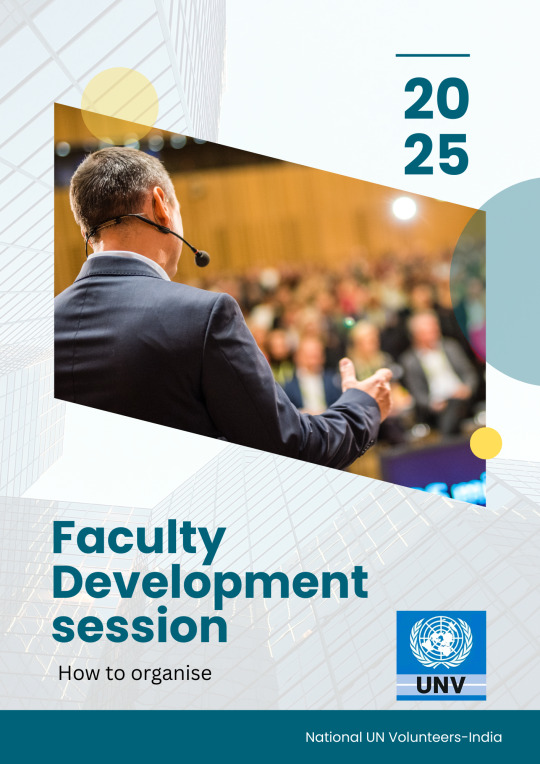

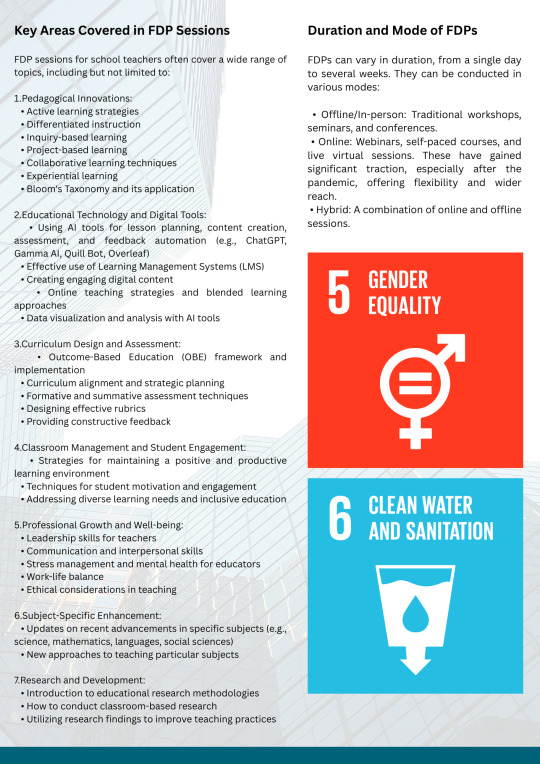
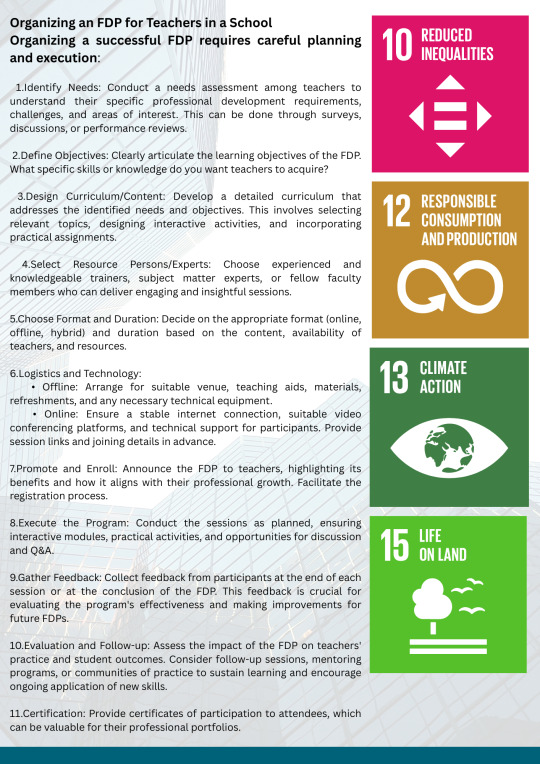
0 notes